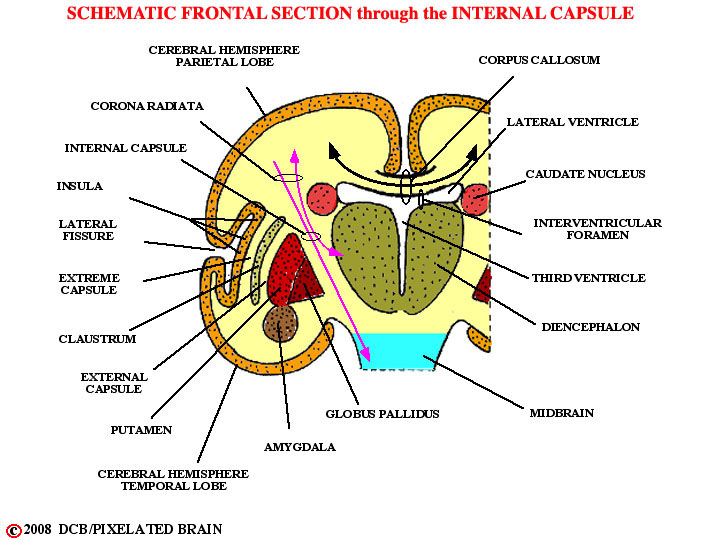
PIXBRAIN HOME _ _ MOD 1 HOME _ _ previous _ _ FIGURE 1-46 _ _ next _ _ I WANT TO
- - With further development, neuron cell bodies accumulate in a densely packed sheet on the surface of the hemisphere to form the cerebral cortex. Buried deeply within the hemisphere are certain other highly cellular areas (nuclei) which as a group are termed the basal ganglia. This group of nuclei - real troublemakers at this point - include the caudate nucleus, the putamen, the globus pallidus, the amygdala and the claustrum.
- - Major white matter pathways thread their way between and around these basal ganglia nuclei. They include:
_____1) the corpus callosum, connecting one cerebral hemisphere with the other and often forming the roof of the lateral ventricle.
_____2) the internal capsule, which contains some fibers (axons) interconnecting the diencephalon with the cerebral cortex and others which pass from the cortex to more caudal parts of the brain stem and the spinal cord.
_____3) the corona radiata, which represents the extension of the internal capsule toward the surface of the hemisphere, into the region where the fibers are no longer trapped between the caudate and the lentiform nucleus.
_____4) the external and extreme capsules, pathways connecting one part of the hemisphere with another and passing on either side of the claustrum.